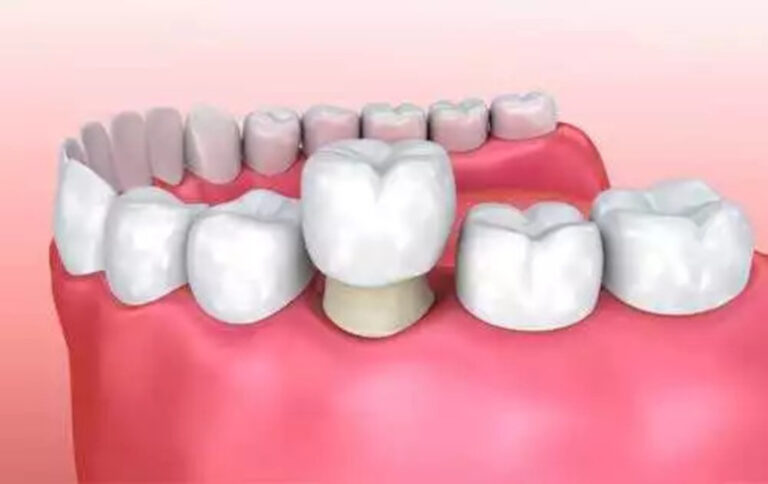Early Signs of Tooth Decay in Adults: What You Shouldn’t Ignore
Tooth decay doesn’t knock on the door with a dramatic entrance. It creeps in quietly, often showing subtle signs before it causes real trouble. As adults, we sometimes assume cavities are just a childhood problem, but the truth is, tooth decay can—and does—sneak up on us too.
So how can you tell if something’s off before it turns into a full-blown dental disaster? Let’s break down the early signs of tooth decay in adults, in a way that actually makes sense.
Tooth Sensitivity That Wasn’t There Before
Have you recently noticed yourself wincing when drinking hot coffee or biting into a scoop of ice cream—when that never used to be a problem? This kind of new or worsening sensitivity could be one of the earliest red flags of tooth decay. In the beginning stages, decay starts to break down your tooth’s protective outer layer, known as enamel. Once that enamel thins or is breached, the underlying dentin becomes exposed. Dentin contains tiny tubules that connect to the nerve of your tooth, which is why it can feel especially sensitive to heat, cold, sweet foods, or even acidic drinks. This isn’t just a random annoyance—it’s your tooth trying to tell you that it’s in distress. Ignoring sensitivity can give decay time to progress deeper into the tooth structure, leading to more complicated (and costly) problems down the line. If you notice these sensations cropping up out of the blue, it’s a good idea to get it checked out sooner rather than later.
A Chalky or White Spot on the Tooth
You might not inspect your teeth closely every day, but sometimes a glance in the mirror can reveal something important. One of the earliest visible signs of tooth decay is the appearance of a chalky or white spot on the surface of a tooth—usually near the gumline or in the grooves of your molars. This white spot indicates enamel demineralization, where minerals like calcium and phosphate have been leached out due to acid attacks from plaque bacteria. At this stage, the enamel hasn’t yet broken down to form a cavity, which means the damage might still be reversible. With proper intervention—like using fluoride toothpaste or treatments, improving your brushing and flossing habits, and cutting down on sugary snacks—you may be able to re-mineralize the enamel and stop the decay in its tracks. Ignoring it, however, allows the process to continue silently until it forms an actual hole in the tooth.
Mild Discomfort or a ‘Twinge’
You might not feel actual pain, but rather a strange or subtle sensation when you’re chewing, brushing, or sometimes even doing nothing at all. It might feel like a quick twinge or dull pressure—easy to overlook or dismiss. However, this kind of discomfort is often your tooth’s early distress signal. When decay starts to penetrate the enamel, it can begin irritating the dentin layer beneath, which has direct connections to the nerve. This irritation may not result in a full-blown toothache yet, but it’s still a sign that something is brewing beneath the surface. Think of it as your body giving you a heads-up—before things escalate. If you consistently notice a weird sensation in the same spot, especially while eating or brushing, don’t ignore it. That minor twinge could be your chance to catch a cavity early, when treatment is quick, simple, and far less invasive.
Food Getting Stuck More Often
Have you started noticing that food is getting trapped between the same teeth over and over again—especially in spots where it never used to? That change may seem minor, but it can signal the beginning of enamel breakdown or structural changes in the teeth due to decay. As decay begins to weaken the enamel or soften the edges of a tooth, it can alter the tight contact points between adjacent teeth, creating small gaps or spaces where food more easily lodges. You might also notice this when floss starts catching or fraying in a certain spot. While it’s tempting to just keep a toothpick handy and move on, this symptom deserves more attention. Left unchecked, these open contacts can become a trap for bacteria and food particles, accelerating the decay process and leading to inflammation in the gums or even cavities between the teeth. If you find yourself reaching for floss more often than usual in one specific area, it’s time to let your dentist take a closer look.
A Dull Ache That Comes and Goes
We all experience minor discomfort from time to time—maybe it’s a bit of tension from grinding your teeth or a sore jaw after a long day. But when you start to notice a dull, recurring ache that lingers in one specific area of your mouth, it’s time to pay attention. This kind of discomfort can be a subtle but serious signal that tooth decay has already begun to move past the enamel layer and is irritating the dentin or even nearing the pulp. At this stage, the pain often isn’t sharp or intense; instead, it comes and goes, especially after eating or drinking. Many adults shrug it off because it doesn’t seem urgent—but that’s exactly how decay manages to advance quietly. What starts as a vague ache could eventually evolve into a sharp pain, infection, or the need for a root canal. If a dull ache keeps returning to the same spot, don’t wait for it to worsen—see your dentist and catch the issue before it escalates.
Bad Breath That Won’t Go Away
Everyone experiences bad breath from time to time—after a garlicky meal or first thing in the morning. But if your bad breath seems to persist throughout the day, even after you’ve brushed, flossed, or rinsed with mouthwash, it could point to something more serious lurking beneath the surface. One possible culprit? Tooth decay. When cavities form, they create little pockets where food particles and bacteria can hide. These bacteria feed on sugars and release volatile sulfur compounds, which are responsible for that unpleasant, lingering odor. You might also notice a persistent bad taste in your mouth that brushing doesn’t seem to fix. These are warning signs that decay could be present—possibly between teeth or beneath existing fillings where it’s hard to detect without a dental exam. So if you feel like you’re constantly battling bad breath and nothing seems to help, it’s time to visit your dentist. They can identify if decay is the underlying issue and help you get back to fresh breath and a healthier smile.
Final Thoughts: Listen to Your Teeth
The tricky thing about early tooth decay is that it doesn’t always hurt right away. But that doesn’t mean it’s harmless. Catching it early can mean the difference between a quick filling and a root canal (or worse, losing a tooth).
So if something feels a little “off” in your mouth, trust your instincts and make that dental appointment. As dentists, we’d much rather see you early and reassure you than catch decay after it’s done some serious damage.





